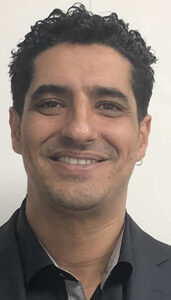By Shahar Masori

SAN DIEGO — While the political systems in Israel and the US differ in many ways, their election strategies, messaging, and public engagement highlight distinct national characteristics and challenges.
In Israel, the election process is short but intense. Campaigns last only a few months, often driven by a coalition’s collapse or a prime minister’s need for a mandate. Political ads, rallies, and debates fill the airwaves and streets, flooding voters with rapid, passionate messaging. The parliamentary system, which operates on proportional representation, leads to dozens of parties competing for seats in the Knesset, Israel’s legislative body. Each party targets a specific voter base, whether religious, secular, Arab, or representing various socioeconomic interests. With such diversity, coalition-building becomes a key aspect of the campaign, often shaping the post-election government long before the ballots are even cast.
In contrast, the U.S. election campaigns are marathon events, stretching over a year or more, particularly in the presidential race. Candidates must first survive the grueling primaries, navigating their party’s complex internal dynamics, before facing a general election. The two-party system means campaigns are laser-focused on a limited set of key issues, and the process is drawn out with months of debates, town halls, fundraising events, and endless media cycles. The campaigns invest heavily in personality politics, sometimes focusing more on the candidates themselves than on the policies they promote. This lengthier process gives candidates more time to raise funds and build momentum but can also lead to voter fatigue.
One of the starkest differences between the two countries is the role of money in politics. In the U.S., election campaigns are dominated by Super PACs and private donations, often leading to billions of dollars being poured into media, polling, and community organizing efforts. The influence of money is enormous, with candidates spending vast sums on TV ads, social media campaigns, and sophisticated data analytics. In Israel, while campaign funds also play a role, it is nowhere near the same scale. Public campaign financing laws and spending limits keep the playing field somewhat more level, though party loyalty and coalition politics carry more weight than pure financial backing.
Another key distinction is the role of media in shaping the narrative. In Israel, where the electorate is smaller and more tightly knit, the media serves as a direct channel between politicians and the public. Live interviews, debates, and panel discussions often take center stage. Social media, though influential, hasn’t yet eclipsed traditional media to the extent it has in the U.S., where social media platforms like Twitter, Facebook, and Instagram have transformed the electoral landscape. In America, candidates frequently bypass traditional media to speak directly to voters through tweets or viral videos, turning the campaign into a spectacle of constant, real-time updates and reactions.
Living in both countries has given me a deep appreciation for their unique electoral processes, but it has also left me concerned. In Israel, rapid-fire campaigns and the multiplicity of parties allow a range of voices to be heard, but they can also lead to fractured coalitions and unstable governments. In the U.S., the drawn-out, money-driven nature of the process can alienate voters, making them feel disconnected from the core issues. Yet, both systems reflect their countries’ values—Israel’s emphasis on coalition and communal representation, and America’s focus on competition and individualism.
As we watch another round of election campaigns unfold in both Israel and the U.S., it’s clear that both nations are grappling with how to maintain their democratic traditions while confronting new challenges. In the end, it will be up to the voters to determine whether these campaigns reinforce or undermine the values their countries hold most dear.
*
Shahar Masori was raised in Hadera, Israel, and immigrated to San Diego in 2000, where he helped build a balloon decor business and raised two sons.